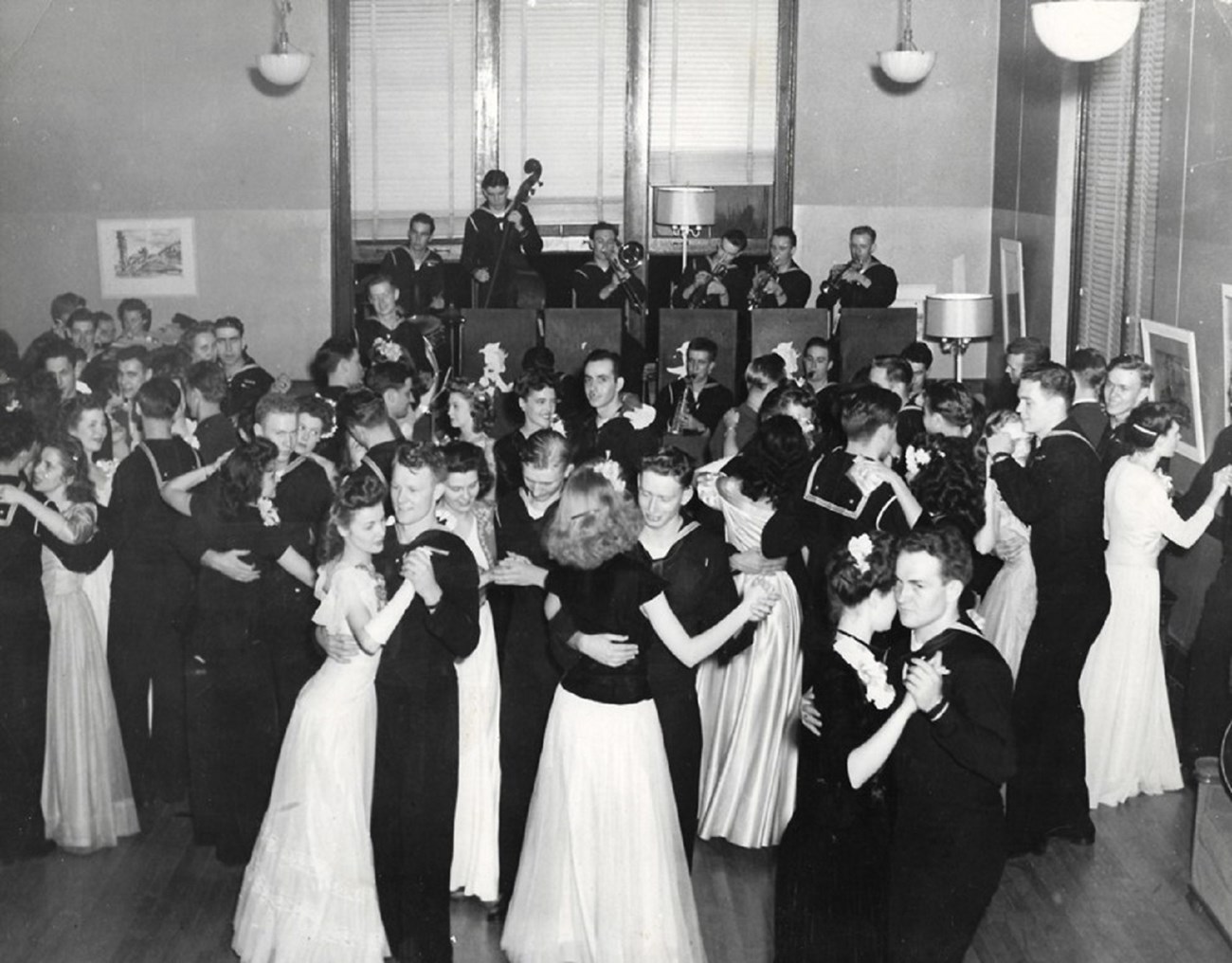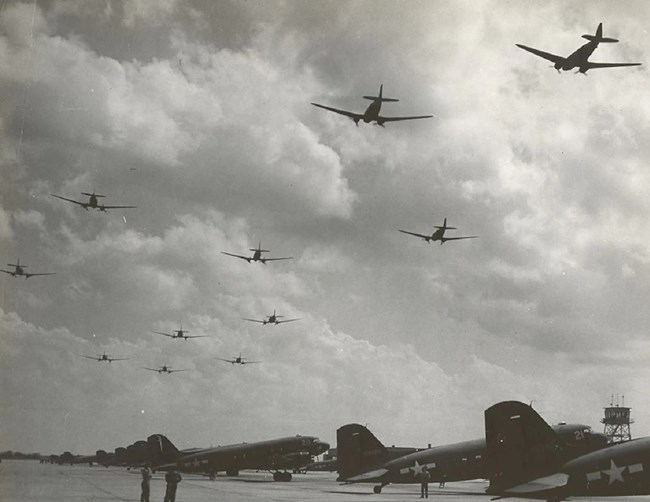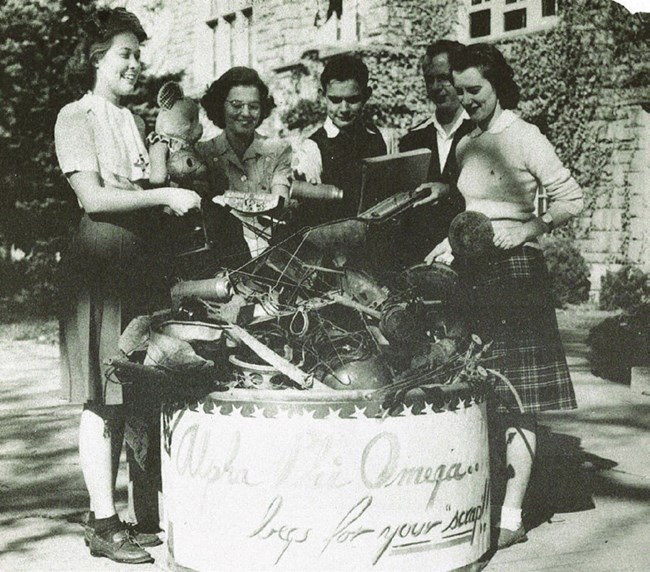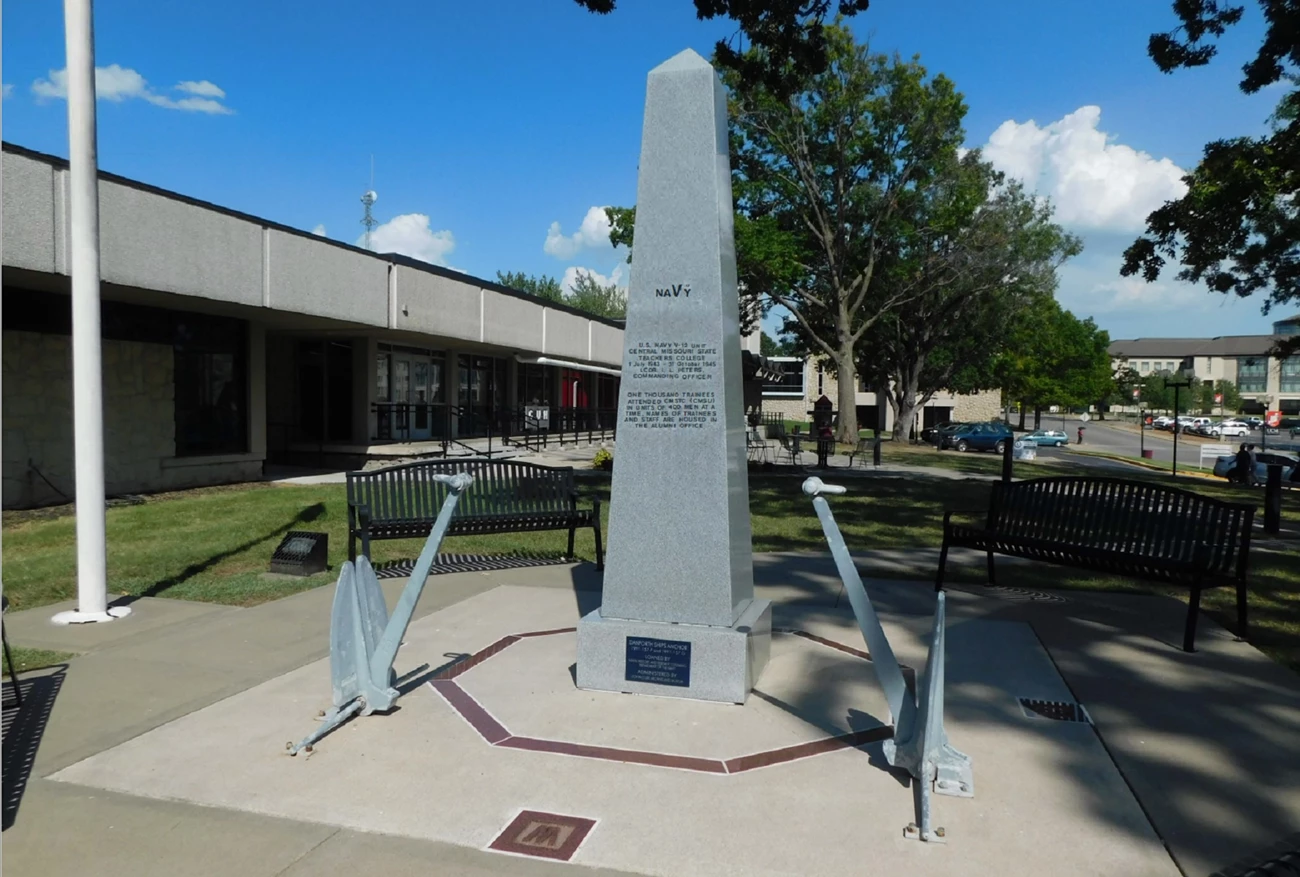Last updated: December 28, 2023
Article
Johnson County and Warrensburg, Missouri

Courtesy of the McClure Archives
American World War II Heritage City
After the attack on Pearl Harbor on Dec. 7, 1941, the United States began a massive buildup across all of its military forces. In early 1942, the U.S. Army chose an area in Johnson County, Missouri just south of the town of Knob Noster as the site of a new training base. Sedalia Glider Base (later renamed Sedalia Army Air Field) was assigned to I Troop Carrier Command, Army Air Force and was one of eight sites in the U.S. dedicated to training glider pilots and Army paratroops. During World War II, Sedalia Army Air Field trained Waco CG-4 glider pilots and paratroopers for combat as well as the crews of Douglas C-46 and C-47 transport planes in maintenance and operations.

US Air Force/Strategic Air Command
The citizens of Johnson County and the surrounding communities worked to help new arrivals at the Air Field feel welcome. The cities of Sedalia and Warrensburg created USO clubs with reading and writing rooms and chaperons were enlisted to take young women to and from dances. To help ease homesickness the USO clubs sent a gift to every man on base in honor of their first Christmas in the community.
Warrensburg, the seat of Johnson County, was the home of the Central Missouri State Teachers College (CMSTC), today the University of Central Missouri. During World War II, CMSTC was one of 131 colleges and universities in the U.S. chosen to participate in the Navy's V-12 Officer Training Program and one of only seven in Missouri selected to conduct line (deck) officer training.
By late 1942, the size of the U.S. Navy had increased over sixty percent. To address the urgent need for commissioned officers and to slow dropping college enrollment rates, President Franklin Roosevelt asked the military to include institutions of higher learning in their mobilization plans. The Navy responded by creating the V-12 College Training Program, choosing private and state-run colleges and universities to host its classes. Candidates enrolled in the Navy's Reserve Officers Training Program; enlisted men recommended by their commanding officers; and high school seniors who had passed a qualifying exam were all eligible for the V-12 program. The line (deck) officer trainees at CMSTC, who were all on active duty, took college courses year-round in four, three-month terms. After finishing the accelerated 16-month program they were issued a certificate of completion for a two-year college degree. The trainees were then sent on for 120 days of training at a Naval Reserve Midshipmen’s School and commissioned as naval officers.

university of Central Missouri
The V-12 program at CMSTC started on July 1, 1943, and ran until October 31, 1945. The men lived on campus in the school’s first residential unit, Yeater Hall, which opened in 1941 as a female-only dormitory. To allow the trainees to live in Yeater, its female residents moved off campus and into homes in Warrensburg. Having the V-12 Program on campus allowed the college to retain its entire faculty and staff and continue teaching regular classes. The trainees quickly became a part of campus and community life, attending classes and socializing with civilian students. The annual V-12 Navy Ball was considered the social event of the season with trainees wearing their dress uniforms. In all one thousand V-12 trainees attended CMSTC during the 27 months the program was active at the college.
Today, Johnson County, the city of Warrensburg, and surrounding communities remember their citizens' contributions to World War II and the home front in multiple ways through: the Alumni Memorial Chapel at the University of Central Missouri (UCM) and the chapel's Gold Star and Fighting for Freedom Honor Rolls; the UCM Navy V-12 Scholarship; Veterans and V-12 Program monuments; and Veterans Day parades. In addition, the McClure Archives and University Museum at UCM owns a diverse collection of World War II materials donated by alumni, staff, and students. It's also a Blue Star Museum and a partner in the Freedom’s Frontier National Heritage Area.

Johnson County and the City of Warrensburg
